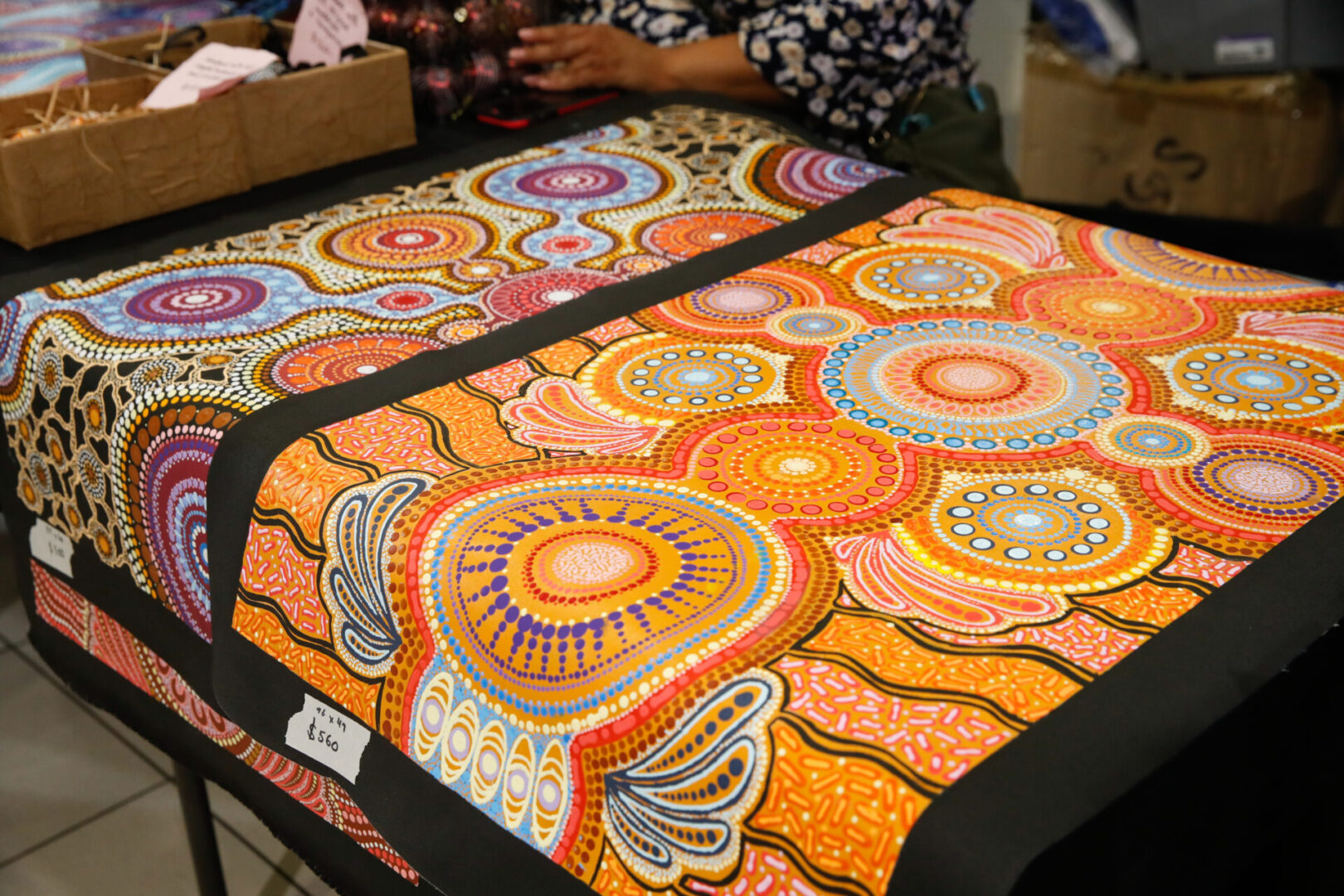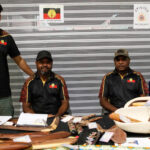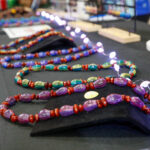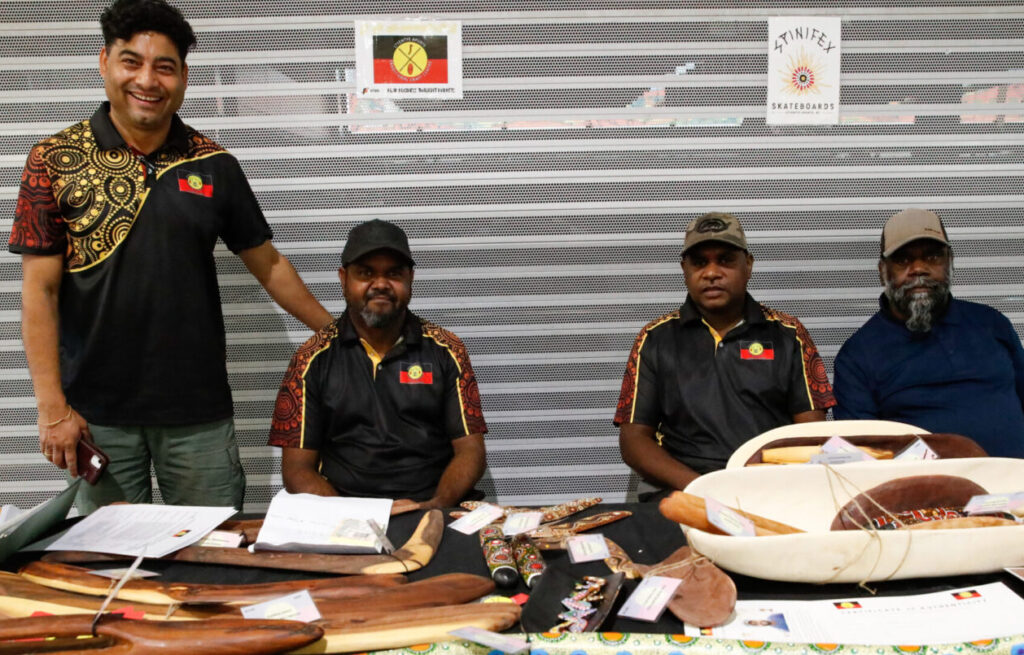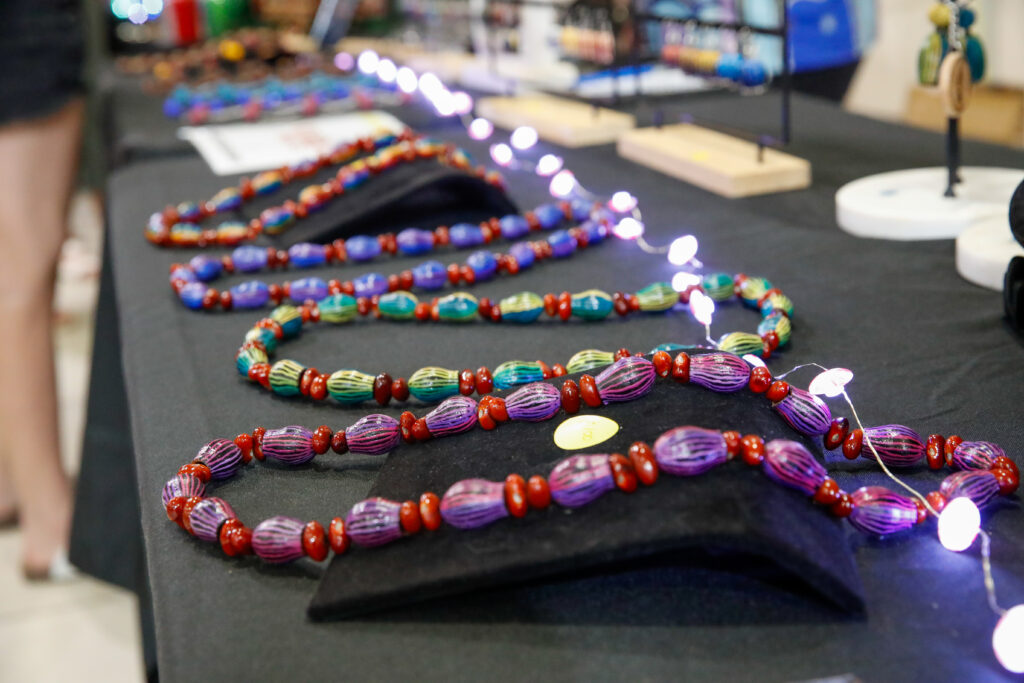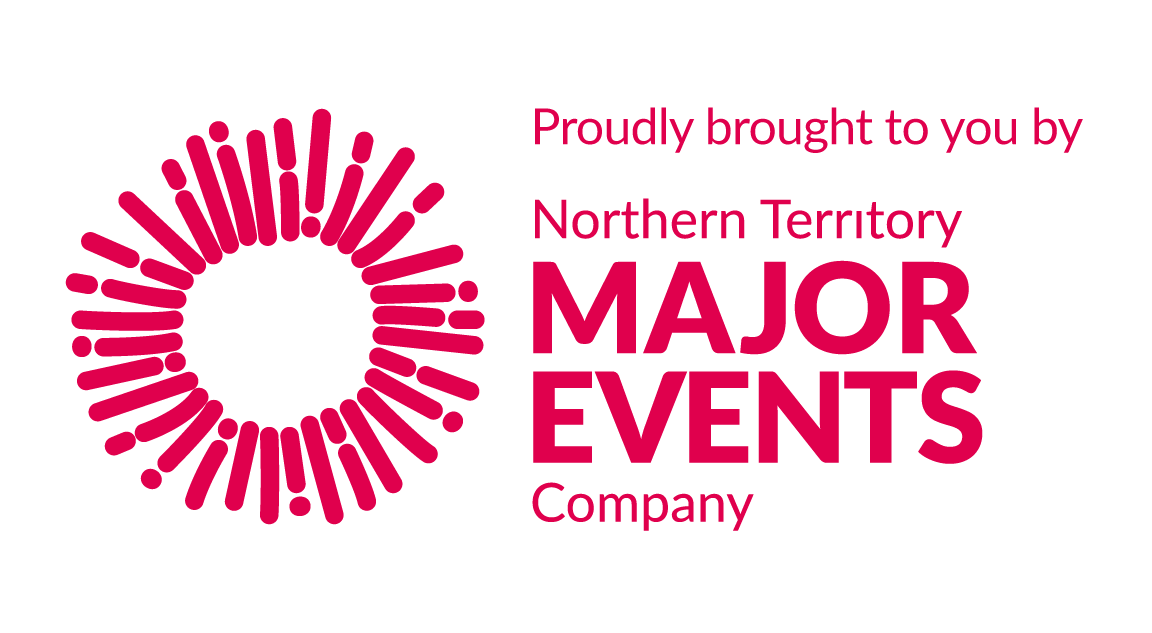Stunning Aboriginal artworks will be available at the Desart and NT Indigenous Business Network (NTIBN) Buy Blak Market for Parrtjima 2024.
NTIBN, in partnership with Desart, is presenting a three-night marketplace at Parrtjima from 12-14 April, with beautiful paintings, woodwork, prints, baskets, sculptures and craft items from six Central Australian art centres on sale.
Visitors will also find jewellery, bush medicine and beauty products and unique cultural experiences from a number of Indigenous Business.
The Buy Blak Market is more than just a marketplace – it’s a celebration of community, culture and connection.
By supporting Indigenous businesses and art centres, festival goers will not only acquire beautifully crafted products but contribute to the growth and sustainability of Aboriginal communities across the Northern Territory.
Find out more about the art centres taking part below.
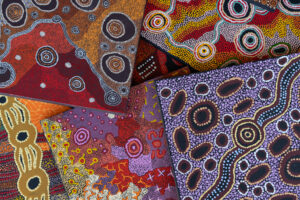
Tjungu Palya
Tjungu Palya is an Indigenous-owned and governed community art centre based in Nyapari community on the APY Lands of South Australia.
Located about 100 km south of Uluru (Ayres Rock), Nyapari is set at the base of the majestic Mann Ranges in the heart of country traditionally owned by the Pitjantjatjara people.
Tjungu Palya means working together in a “good and happy way” with artists from the three communities of Kanpi, Nyapari and Watarru coming together to paint to earn money to support their families. Since its inception in 2006, Tjungu Palya has grown to be a dynamic and innovative community art centre which plays a vital economic role in the sustainability of these small communities. Multiple generations of top-tier artists gather together daily, painting, singing, and re-telling the Tjukurpa, which is a system of belief for the Anangu.
Visit https://www.tjungu.com/ for more information and sales enquiries.
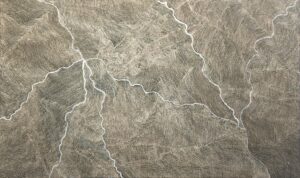
Papunya Tjupi Arts
Based in Papunya, the birthplace of the Western Desert painting movement, Papunya Tjupi Arts supports emerging artists and some of Australia’s leading contemporary painters.
Papunya Tjupi Arts, an Aboriginal owned and directed community arts organisation located 250km northwest of Mparntwe (Alice Springs), was established in 2007. This was in response to the vacuum following the homelands movement of the late 1970s, which saw an exodus of many of the famous pioneer painters.
Since then the artists of Papunya Tipi Arts have established their own unique identity based on the legacy of their forefathers. They are renowned for their strong line-work and for continuously developing new ways to tell the old stories with 150 artists from Papunya and surrounding outstations currently supported by the art centre.
Central to Papunya Tjupi Arts is the understanding that painting is an important part of culture and connection to Country, and that the teaching and passing of knowledge is what keeps the community’s future strong.
Papunya Tjupi’s artists exhibit fine art paintings nationally and internationally and feature in major private and public collections.
Visit https://www.tjupiarts.com.au/ for more information and sales.
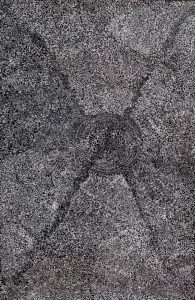
Utopia Art Centre
Utopia Art Centre is home to some of the Central Desert’s most exciting new art from emerging and established artists.
Located 250km northeast of Alice Springs, Utopia Art Centre works across 16 remote homelands and provides a space for intergenerational learning and cultural expression on Country.
Utopia, which locals call Urapuntja, has a diverse history with artists gaining international recognition for batik in the 1980’s before transitioning to painting.
Many senior artists have travelled and exhibited across the world, including the famed Emily Kame Kngwarreye. The bold brushwork and expressive colour that set Utopia artists apart has been continued by the younger generation of children and grandchildren painting today.
Senior artist Sam Jampijinpa Mbitjana Dixon said the development of the art centre has always had the artists, culture and history at its heart.
“We’re strong. We’ve been holding this country. We’ve been waiting a long time for that power to come back. Old People gave us that power a long time ago and now we’re making strong canvas here. This is our art story now,” he said.
Visit https://www.utopiaartcentre.com.au/ for more information and sales.
Tjanpi Desert Weavers
Celebrating life, creativity and Country, the Tjanpi Desert Weavers art centre works with women in the remote Central and Western desert regions who earn an income from contemporary fibre art.
A social enterprise of the Ngaanyatjarra Pitjantjatjara Yankunytjatjara (NPY) Women’s Council, Tjanpi (meaning grass in Pitjantjatjara language) represents over 400 Anangu/Yarnangu women artists from 26 remote communities on the NPY lands.
The NPY lands cover around 350,000 sq km across the tri-state (Western Australia, South Australia and Northern Territory) border region of Central Australia.
Tjanpi artists use native grasses to make spectacular contemporary fibre art, weaving beautiful baskets and sculptures and displaying endless creativity and inventiveness.
Developed from the traditional practice of making manguri rings, working with fibre in this way has become a fundamental part of Central and Western desert culture.
Tjanpi Desert Weavers embody the energies and rhythms of Country, culture and community. The shared stories, skills and experiences of this wide-reaching network of mothers, daughters, aunties, sisters and grandmothers form the bloodline of the desert weaving phenomenon and have fuelled Tjanpi’s rich history of collaborative practice.
Visit https://tjanpi.com.au/ for more information and sales.
Warlukurlangu Artists
Warlukurlangu Artists is one of the oldest, strongest and most significant Aboriginal Art Centres in Australia.
Established in 1985 and based in the community of Yuendumu, Warlukurlangu Art Centre is best known for its high quality, vibrantly coloured paintings.
Over 800 men, women, and children make up the membership of the Warlukurlangu Artists Aboriginal Corporation, which is open to Warlpiri and Anmatyerre people from Yuendumu, Nyirripi and surrounding communities.
In the local Warlpiri language Warlukurlangu means ‘belonging to fire’ and is named after a fire dreaming site west of Yuendumu.
Art Centre Manager Cecilia Alfonso said the art centre works to foster an understanding of Indigenous culture and to enhance the lives of the local people.
“Profits are returned into the community, and the art centre supports community health and education projects such as their community dog health program,” she said.
Artwork is collected worldwide and has been exhibited at public galleries across Australia and in numerous international venues.
Warlukurlangu Artists also “functions as a living repository for local culture, arranging visits to country, storing sacred artefacts for use in public and sacred ceremonies, and preserving its rich archive for the benefit of scholars and visitors alike”.
“We welcome visitors to our Art Centre coming by air or by road, about three and a half hours drive northwest of Alice Springs up the Tanami Highway. No permit is required for single day visits,” said Cecilia.
Visit https://warlu.com/ for more information and online sales.
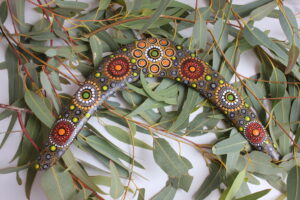
Ltyentye Apurte Traditional Craft Centre
The Traditional Craft Centre was founded by Arrernte men living in the community of Ltyentye Apurte (Santa Teresa), around 85km south east of Alice Springs.
An Arrernte-owned Aboriginal art centre, it is a social enterprise run with administrative support from the Atyenhenge Atherre Aboriginal Corporation.
The men make kwetere (nulla-nullas), terurre (clapsticks), urtne (coolamons) and alye (fighting and hunting boomerangs). They learnt the art of making wooden tools, instruments and weapons from elders in their families and the community.
The Traditional Craft Centre is also a place of intergenerational knowledge transfer. Senior artists share techniques and cultural stories and knowledge with younger generations at the art centre and on the many bush trips gathering wood from local trees such as ankerre (coolabah) blue mallee (tyertepe) and artetye (mulga).
Visit https://traditionalcraft.com.au/ for more information and online sales.
